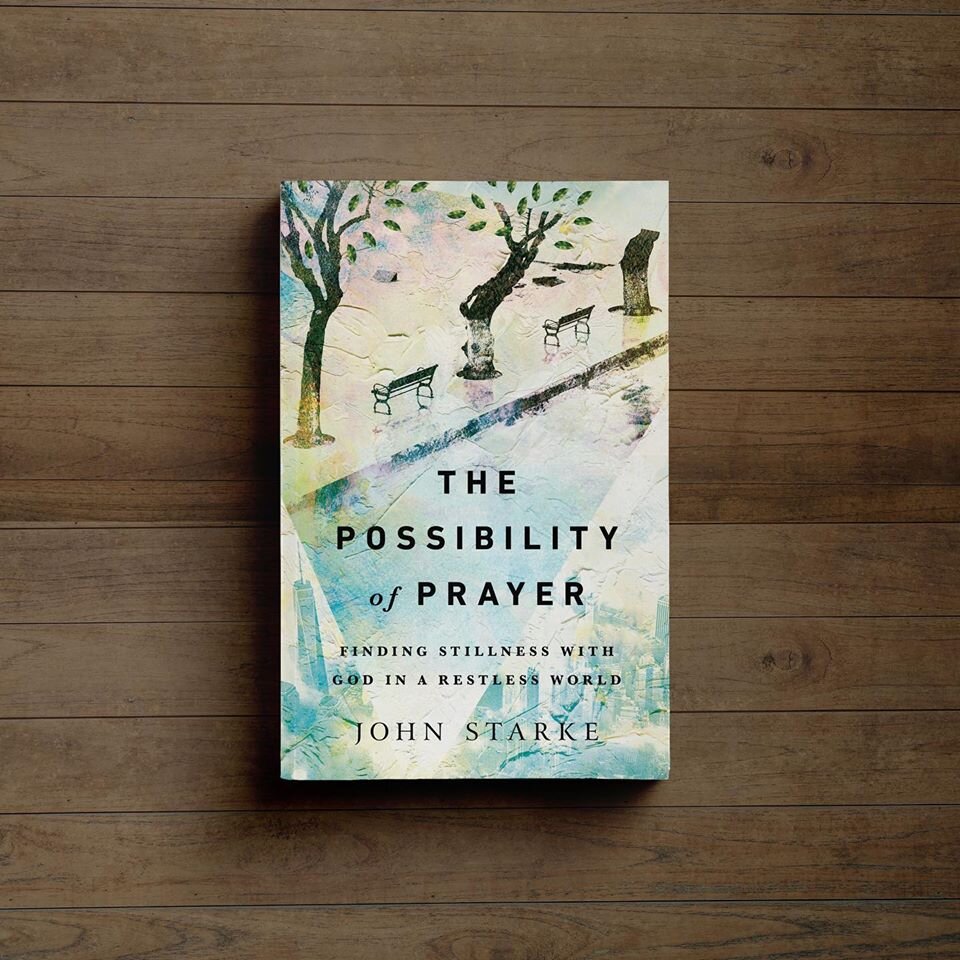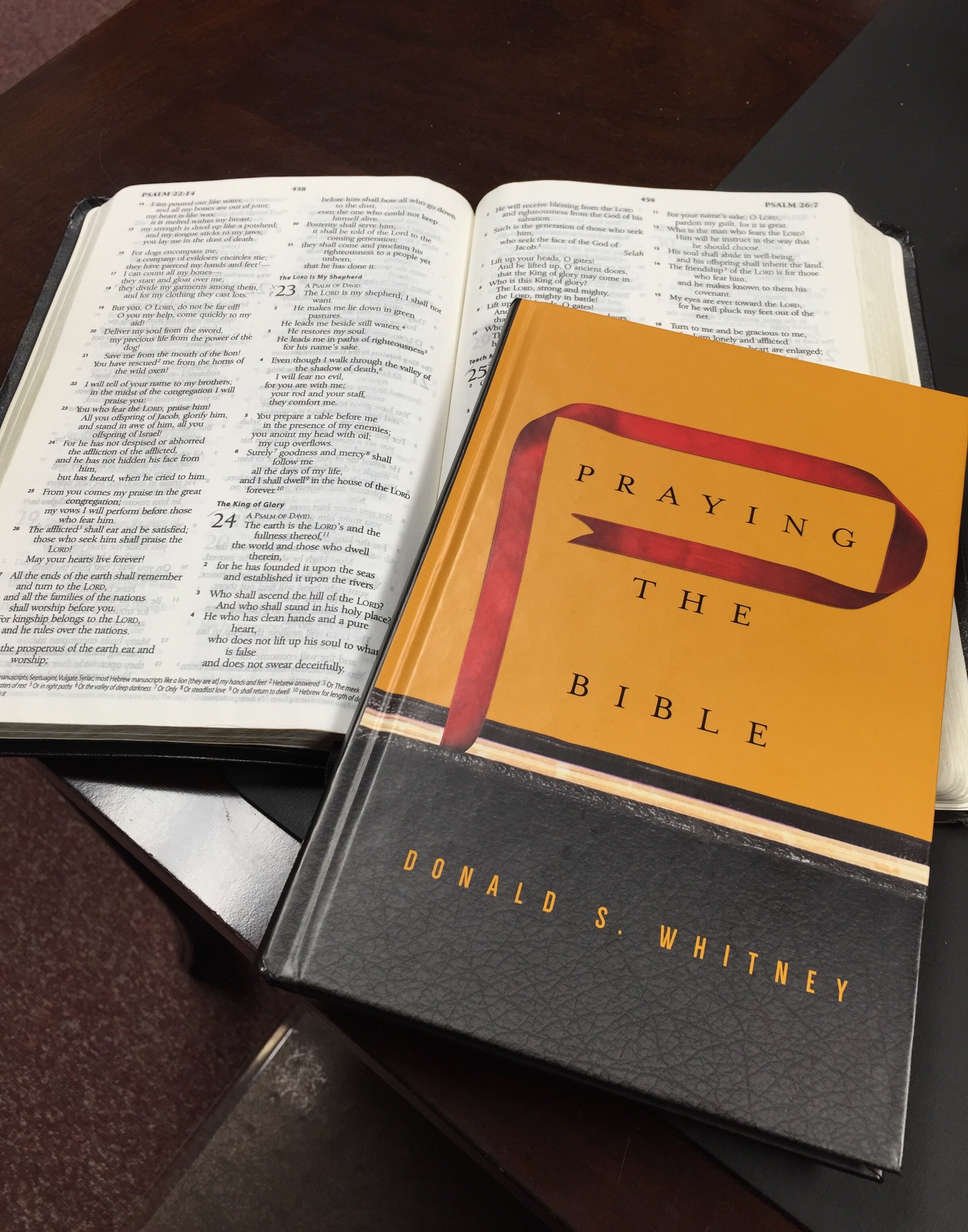I don’t know a Christian who hasn’t struggled at one time or another in their life with prayer. We long to experience God as others seem to in prayer. But prayer itself can feel like a massive challenge. In this hare-world of notification and hustle, prayer represents a tortoise reality. We know it’s the better way, but how do we live like that?
We are looking forward to a sermon series on prayer that will launch in September and I want to give you an opportunity to get a jump start on growing in your prayer life.
I still feel like a toddler in my prayer life, but two books have encouraged and strengthened me in my prayer life this year. A third book encouraged me years ago and still inspires me today. I commend all three to you. They are very different. Pick up one that you think will help you the most and dive in. My prayer for you (and me) isn’t for knowledge about prayer, but for a revitalized longing for Christ and communion with him.
The Possibility of Prayer by John Starke
If we’re honest, prayer can feel out of reach, a discipline for the spiritual elite. It seems as though it has always felt this way for humans—the Israelites begged Moses to speak to God on their behalf, Christians invoked saints instead of seeking God himself. But perhaps the challenge of prayer has never been so acute. Our fast-paced, information-soaked world shields us from meaningful time with God, and mocks the seeming non-productivity of a prayerful life.
John Starke (who I’m blessed to be friends with) wrote The Possibility of Prayer as an invitation to swim against the cultural current and encounter God in prayer. Starke reminds us that, “The Bible challenges our utilitarianism. The prayers in the Psalms use words of waiting, watching, listening, tasting, and seeing, meditating and resting. It's remarkable how inefficient these actions are. They aren't accomplishing anything. There isn't a product on the other side of these prayerful actions. Yet over the years they bring steadfastness, joy, life, fruitfulness, depth of gratitude, satisfaction, wonder, an enlarged heart, feasting, and dancing.”
The Bible also challenges our perception that prayer is only for the spiritual elite. The possibility of prayer begins with a God who took on flesh and who cares so deeply for us that he knows our tossing at night as well as the hairs on our head (I love Starke’s reflections on both of these). Our Triune God invites us into relationship with him, not hesitantly, but enthusiastically.
Starke rightly points to our heart as the main hindrance to prayer. Prayer is a challenge because it requires for us to slow down and listen. It cannot become commodified. “Communion is a transformative habit, but personal transformation cannot be the ultimate goal or it will never be transformative. God must never be a mere enhancement to our self-improvement plan or a ticket to a better life. He is life itself. He must be the goal, the end, the prize.” Starke points to Augustine’s theology of desire as crucial in reshaping the affections of our heart toward God himself. When our hearts are re-oriented around the significance of God, we live the life of freedom God intends for us. “We long to be praised and adored, and we’re willing to sacrifice so much to be loved. But the psalmist is pressing into the reality that if all the world loved us, it would still be just a breath compared to the weightiness of the love and affirmation of God. If we don’t take time for solitude, humans will seem weighty, and God will seem inconsequential and light. But God is not, and the freest and happiest people in the world know it.”
Prayer can be painful because as we encounter God we meet him in all of our weaknesses, sin, and vulnerabilities. “Prayer must include some healthy exploration of our emotional life. This is not navel-gazing but holding still enough to see ourselves clearly. For many of us this means we do not escape to our phones, our email, or our social media feeds when emotions prove overwhelming. We hold on and look in. It’s not easy.”
Starke encourages us to cultivate practices and rhythms which will grow our prayer life: communion, meditation, solitude, fasting and feasting, sabbath, and corporate worship. Starke deploys the Psalms as a framework for understanding what true prayer looks like. “The psalmist is not engaging in passive exercises. This is not the gentle emotional work of relaxing and trying to empty your mind. It's fighting. These are intentional habits: I will appeal; I will remember; I will ponder; I will meditate. Christian meditation is fighting, grasping for joy, It's intentionally and regularly remembering and pondering the history of God's power for his people. If you coast, you lose.”
I commend Starke’s The Possibility of Prayer to you. You will be convicted and comforted through Starke’s thoughtful shepherding. Starke draws widely from a broad pool of authors who serve as co-guides in this journey. The best thing I can say to commend Starke’s book to you is that it made me long to pray more. I think it will have the same impact on you.
Praying the Bible by Donald Whitney
Donald Whitney offers a very different approach to prayer in Praying the Bible. If, after reading the first review you’re still wondering, “but how do I actually improve my prayer life? What concrete steps can I take to fuel my desire to pray? And how can I turn prayer from drudgery to joy?” These are questions Whitney seeks to answer in his thin book Praying the Bible.
Whitney believes that most of us share the same issue with our prayer life: we try to draw from ourselves what to pray. His solution is as simple as it is elegant: pray the Bible. Whitney reminds us that the Psalms were “designed to be prayed.” German pastor Dietrich Bonhoeffer said, “The Psalms are given us to this end, that we may learn to pray them in the name of Jesus Christ.”
The 19th Century Scottish pastor Robert Murray M’Cheyne once said, “Turn the Bible into prayer…This is the best way of knowing the meaning of the Bible, and of learning to pray.” Ben Patterson said, “By praying the Psalms back to God, we learn to pray in tune with the Father, Son, and Holy Spirit.” That is an encouraging idea! We can actually pray God’s words back to him!
Because of the incredible breadth of the Psalms, Whitney tells us that “praying the Psalms will lead us to confession, thanksgiving, and supplication as well.” Whitney says that he has led many groups through this process and that these are the most frequent responses he hears from those who turn the Psalms into their own prayers:
“My mind didn’t wander.”
“My prayer was more about God and less about me.”
“The time was too short!”
“It seemed like a conversation with a real person.”
“The Psalm spoke directly to the life situation I am in right now.”
“I thought more deeply about what the Bible says.”
“I had greater assurance that I was praying God’s will.”
“I prayed about things I normally don’t pray about.”
“I prayed about things I normally do pray about but in new and different ways.”
“I didn’t say the same old things about the same old things.”
Whitney concludes reminding us that Jesus himself prayed the Psalms back to God on the cross, “[A]t the end, Jesus gathered the last ounce of his strength, strained upward a final time, and cried, ‘Father, into your hands I commit my spirit’ (Luke 23:46), praying the words of Psalm 31:5. Jesus prayed the Psalms. The final act of his earthly life was to pray the words of a psalm.”
I’m grateful for Whitney’s helpful book. He has given us a simple, biblical, and practical method that I’ve already begun to utilize more in my prayer life and look forward to growing in more and more. In one of his appendices, Whitney gives a method of dividing out the Psalms by the day of the month for prayer. I really appreciate that Whitney presses his method down to that granular a level for us. I commend this short and helpful book to you.
The Praying Life by Paul Miller
Paul Miller’s The Praying Life brought me to tears years ago when I first read it. I cried at my own false understandings of who God is, and I cried at my own pretensions in the way I came to God. Miller cuts right to the heart of prayer at the start of his book. He invites us to come messy to the Father, and builds on that scriptural reminder right through to the end.
Miller reminds us what the gift of learning prayer is and isn’t. he says, “Learning to pray doesn’t offer us a less busy life; it offers us a less busy heart.”
Miller says that the struggle to pray itself reveals our sin. He says, “Nothing exposes our selfishness and spiritual powerlessness like prayer.”
The invitation to prayer isn’t an invitation that ought to be stuffed full of “how to’s” and barriers. “Don’t try to get the prayer right; just tell God where you are and what’s on your mind. That’s what little children do. They come as they are, runny noses and all. Like the disciples, they just say what is on their minds.” Miller doubles down. He says, “Come overwhelmed with life. Come with a wandering mind. Come messy.”
How then can we learn how to be faithful in our prayer life? The answer is counter-intuitive, it isn’t a feat of strength or will. “You don’t need self-discipline to pray continuously; you just need to be poor in spirit.”
Miller says that strangely enough, when we truly meet God in prayer we can recoil. “We desperately want intimacy, but when it comes, we pull back, fearful of a God who is too personal, too pure. We’re much more comfortable with God at a distance.”
Miller condenses everything down to one word. “All of Jesus’ teaching on prayer in the Gospels can be summarized with one word: ask.”
Miller’s profoundly grace-filled and gospel-centered book will call you to the heart of God and remind you that we have a God who longs for us to communicate with him.
If you pick up any of these books, or if you’ve already read them, I would love to hear how they have impacted you. And if you have any suggestions for books that have helped you in your prayer life, I would also love to hear your suggestions.
Photo by Aaron Burden on Unsplash
Links are Amazon Affiliate commission links. As an Amazon Associate I earn from qualifying purchases.






